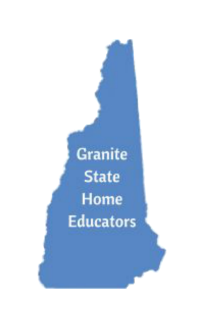Many new(er) homeschooling families struggle with letting go of the public-education mindset -- the “one-size-fits-all” model -- and try to replicate or follow those standards and expectations.
They search for “what to learn in X grade” or “what should my X grader learn.” They also contact us asking “what curriculum is required for X grade?” There are oodles of websites that have grade-level lists of topics for every subject imaginable, but note that they are not identical and some are wildly different.
The standards also vary from one New Hampshire district to another. Graduation requirements are different, too.
Can you guess why?
It’s because grade-level standards and expectations are arbitrary. Each district more or less makes up their own scope and sequence based on New Hampshire’s state standards, so they are different from zip code to zip code.
New homeschoolers often search for grade-level requirements and become frustrated when they don’t find them. The reason they don’t find specific requirements for home-educated grade levels is because they do not exist.
The requirement for New Hampshire home-educated students is a list of broad subjects that must be covered at some point in some way (determined by the parents/guardians) during the children’s grade 1 to 12 years. It is found in RSA 193-A:4. Families self-certify their student’s graduation.
“Instruction shall be deemed home education if it consists of instruction in science, mathematics, language, government, history, health, reading, writing, spelling, the history of the constitutions of New Hampshire and the United States, and an exposure to and appreciation of art and music. Home education shall be provided, coordinated, or directed by a parent for his or her own child.”
The graduation requirement for home-educated students is also in Ed 315:16 rules, the education rules that govern home-education and have the same force as NH law. Note that there aren’t specific class or testing requirements.
“Pursuant to RSA 193:1, I(f)(2), when the parent of a child under the age of 18 submits a document to the department certifying that the child has completed the home education program at the high school level the student shall be determined to have met the requirements for successful completion of a home education program.”
Families are completely free to decide what to learn, when, and what resources to use and to what degree. I know that sounds both overwhelming and haphazard, but in truth, it allows you to customize a learning plan based on the values, objectives and needs that are unique to your family and child. I highly recommend watching our GSHE video series where we talk about how to build a customized education plan, among many other videos on other topics.
This article on our blog may also help. It explains how homeschoolers may, if they choose, use the state standards for various subjects as a guide, but also encourages families to feel comfortable pursuing their own path.
It might be counterintuitive to be so independent, but research shows that homeschoolers academically outperform their public-school peers. In a December 2022 report based on results from the Classic Learning Test (CLT), authors found that “on the adjusted total score, homeschool students scored significantly higher than students from all other school types aside from ‘other.’”
Don't equate a rigid one-size-fits-all structure with learning.
When you realize that each child learns to crawl, walk, talk, and read when they are ready and not all at the same age and pace, and then apply that to the rest of their learning, it makes sense.
This independent approach to learning can be particularly rewarding for teens. They can take ownership of their education, deliberately align it to their post-secondary goals, and that encourages them be engaged and deliberate learners. Isn’t that the goal for so many of us?
The most successful homeschoolers are those that let go of the public-school model and expectations and embrace the freedom to customize a learning plan for their own children. Don’t burden your child with the grade level drill-and-kill textboo ks, workbooks, and flashcards just because that is what your local public school does or what you think they do.
ks, workbooks, and flashcards just because that is what your local public school does or what you think they do.
- If your child loves hands-on projects, do them.
- If your child has a curiosity about a topic, encourage them to chase it down the “rabbit hole.”
- If your child struggles to sit still, give them frequent wiggle breaks.
- If your child needs additional time or a different way to learn, slow down and try a different approach.
Homeschoolers are not limited to the four walls of a classroom, a single building, one learning environment or method, one grade level, or a rigid time frame. Embrace the freedom to create a learning plan that is as unique as your child.
When starting your home education journey, take some time to deschool so you can let go of the public-school one-size-fits-none approach to learning.
This phrase from the popular “Let It Go” song in Frozen is very appropriate.
Let it go, let it go
Can’t hold it back anymore
Let it go, let it go
Turn away and slam the door!

